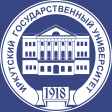List of issues > Series «Earth Sciences». 2024. Vol 50
Ecological and Economic Balance Indicators Evaluation
in Administrative Boundaries of Peter the Great Gulf Basin
Muzychenko T.K. Ecological and Economic Balance Indicators Evaluation in Administrative Boundaries of Peter the Great Gulf Basin. The Bulletin of Irkutsk State University. Series Earth Sciences, 2024, vol. 50, pp. 98-111. https://doi.org/10.26516/2073-3402.2024.50.98 (in Russian)
Baklanov P.Ya., Ganzei K.S., Ermoshin V.V. Beregovye geograficheskie struktury v pribrezhno-morskom prirodopolzovanii [Coastal geographic structures in coastal and marine environmental management]. Doklady Akademii nauk [Academy of Sciences Reports], 2018, vol. 478, no. 2, pp. 229–231. https://doi.org/10.7868/S0869565218020226 (in Russian)
Baklanov P.Ya., Ganzey S.S. Transgranichnye territorii: problemy ustoichivogo prirodopolzovaniya [Transboundary territories: sustainable nature management issues]. Vladivostok, Dalnauka, 2008, 216 p. (in Russian)
Gaiko L.A. Izmenenie klimata v pribrezhnoi zone Primorskogo kraya v sovremennyi period (severo-zapadnaya chast Yaponskogo morya) [Modern climate change in Primorsky krai coastal zone (Northeastern part of the Sea of Japan)]. EESJ, 2016, vol. 4, pp. 35-42. (in Russian)
Isachenko A.G. Landshafty SSSR [Landscapes of the USSR]. Leningrad, Leningrad Institute Publ., 1985, 320 p. (in Russian)
Korytnyi L.M. Basseinovaya kontseptsiya: ot gidrologii k prirodopolzovaniyu [Basin concept: from hydrology to nature management]. Geografiya i prirodnye resursy [Geography and natural resources], 2017, no. 2, pp. 5-16. https://doi.org/10.1134/S1875372817020019 (in Russian)
Kochurov B.I. Geoekologiya: ekodiagnostika i ekologo-khozyaistvennyi balans territorii [Geoecology: ecodiagnostics and assessment of ecological and economic balance]. Smolensk, SGU Publ., 1999, 154 p. (in Russian)
Minnikov I.V., Kurolap S.A. Otsenka ekologo-khozyaistvennogo balansa territorii Voronezhskoi oblasti [Ecological and economic balance evaluation of Voronezh Oblast]. Vestnik VGU, seriya: Geografiya. Geoekologiya [VSU Bulletin: Geography, Geoecology Series], 2013, no. 1, pp. 129-136. (in Russian)
Muzychenko T.K. Otsenka ekologo-khozyaistvennogo balansa v vodosbore zaliva Petra Velikogo (Yaponskoe more) [Ecological and economic balance assessment in Peter the Great Gulf basin (Sea of Japan)]. Geosistemy perekhodnykh zon [Geosystems of transition zones], 2023, no. 7(2), pp. 196-205. https://doi.org/10.30730/gtrz.2023.7.2.196-205 (in Russian)
Nikolaev V.A. Landshaftovedenie. Seminarskie i prakticheskie zanyatiya [Landscape science. Seminars and practicals]. Moscow, Geograficheskii fakultet MGU [MSU Department of Geography], 2006, 208 p. (in Russian)
Ulengov R.A., Urazmetov I.A. Nekotorye podkhody k geoekologicheskoi otsenke regionalnykh geosistem respubliki Tatarstan [Approaches to regional geosystem geoecological assessment in the Republic of Tatarstan]. Sovremennye problemy nauki i obrazovaniya [Contemporary issues of science and education], 2013, no. 1, pp. 140-147. (in Russian)
Chupikova S.A., Oidup T.M., Mongush B.S. GIS-analiz ekologo-khozyaistvennogo balansa kozhuunov Respubliki Tyva [GIS analysis of ecological and economic balance in Republic of Tyva kozhuuns]. Prirodnye resursy, sreda i obshchestvo [Natural resources, environment and society], 2020, no. 3(7), pp. 59-67. https://doi.org/10.24411/2658-4441-2020-10028 (in Russian)
Bremer L.L. et al. Priority watershed management areas for groundwater recharge and drinking water protection: A case study from Hawai’i Island. Journal of Environmental Management, 2021, vol. 286, 111622. https://doi.org/10.1016/j.jenvman.2020.111622
Erol A., Randhir T.O. Watershed ecosystem modeling of land-use impacts on water quality. Ecological Modelling, 2013, vol. 270, pp. 54-63. http://doi.org/10.1016/j.ecolmodel.2013.09.005
Hadley D. Land use and the coastal zone. Land use policy, 2009, vol. 26, S198-S203. https://doi.org/10.1016/j.landusepol.2009.09.014
Stewardship Across Boundaries. Ed. by Knight R.L., Landres P.B. Washington D.C., Island Press, 1998, 388 p.
Lotze H.K., et al. Depletion, Degradation, and Recovery Potential of Estuaries and Coastal Seas. Science, 2006, vol. 312, 1806-1809. https://doi.org/10.1126/science.1128035
Mani-Perez C., et al. Stakeholders’ perceptions of local environmental changes as a tool for impact assessment in coastal zones. Ocean & Coastal Management, 2016, vol. 119, 135-145. http://doi.org/10.1016/j.ocecoaman.2015.10.005
Mulkey D., Hackett W.B., Gordon J.R. Assessing economic activity in coastal areas: A shift‐share approach. Coastal Zone Management Journal, 1982, vol. 10(1-2), pp. 79-96. http://doi.org/10.1080/08920758209361911
Rogers P. The value of cooperation in resolving international river basin disputes. Natural Resources Forum, 1993, vol. 17, no. 2, pp. 117-131.
Teclaff L.A. The river basin concept and global climate change. Pace Environmental Law Review, 1990, vol. 8, 355.
Woodroffe C.D. Coasts: Form, Process and Evolution. Cambridge, Cambridge University Press, 2002, 623 p.
